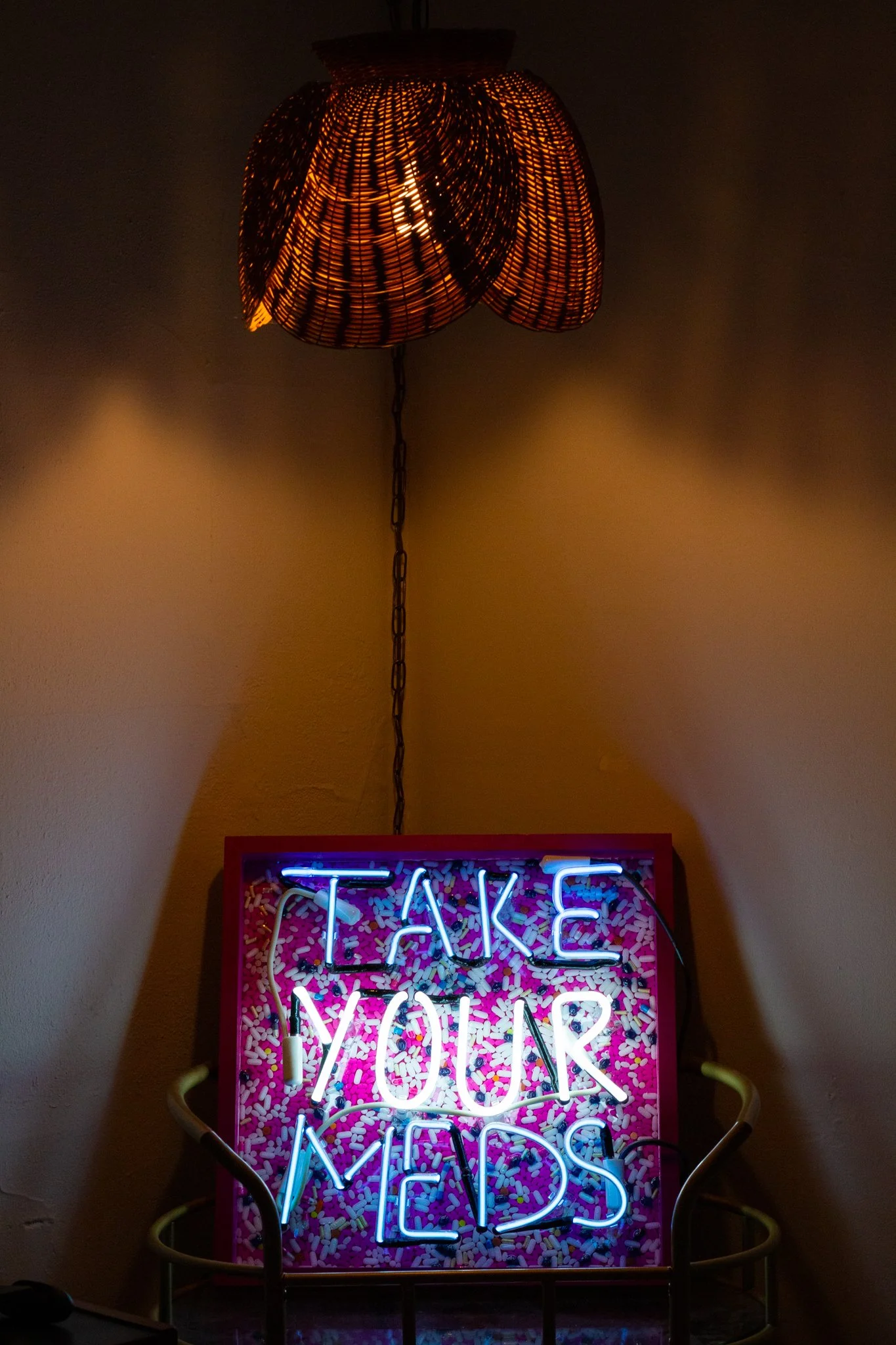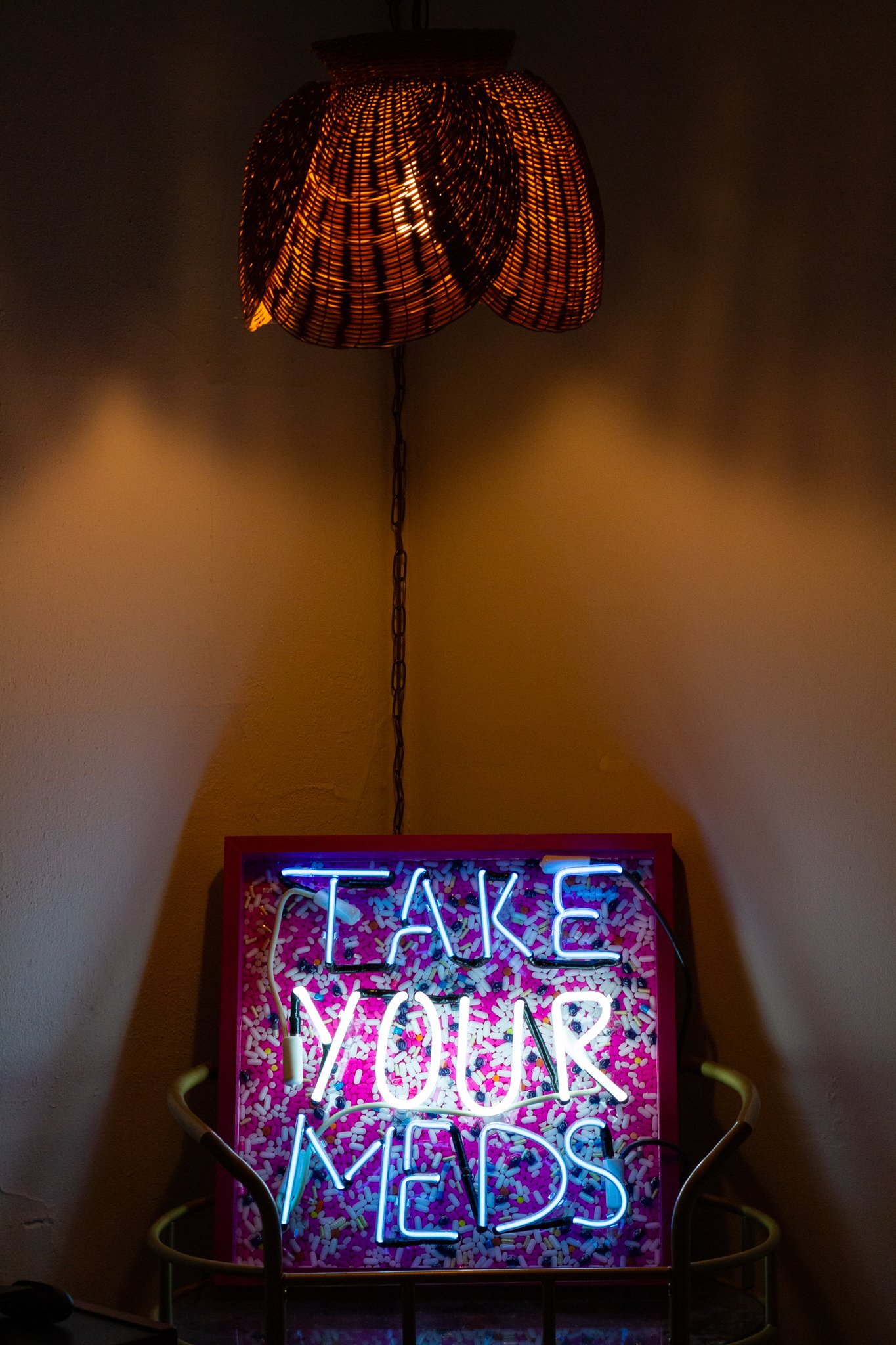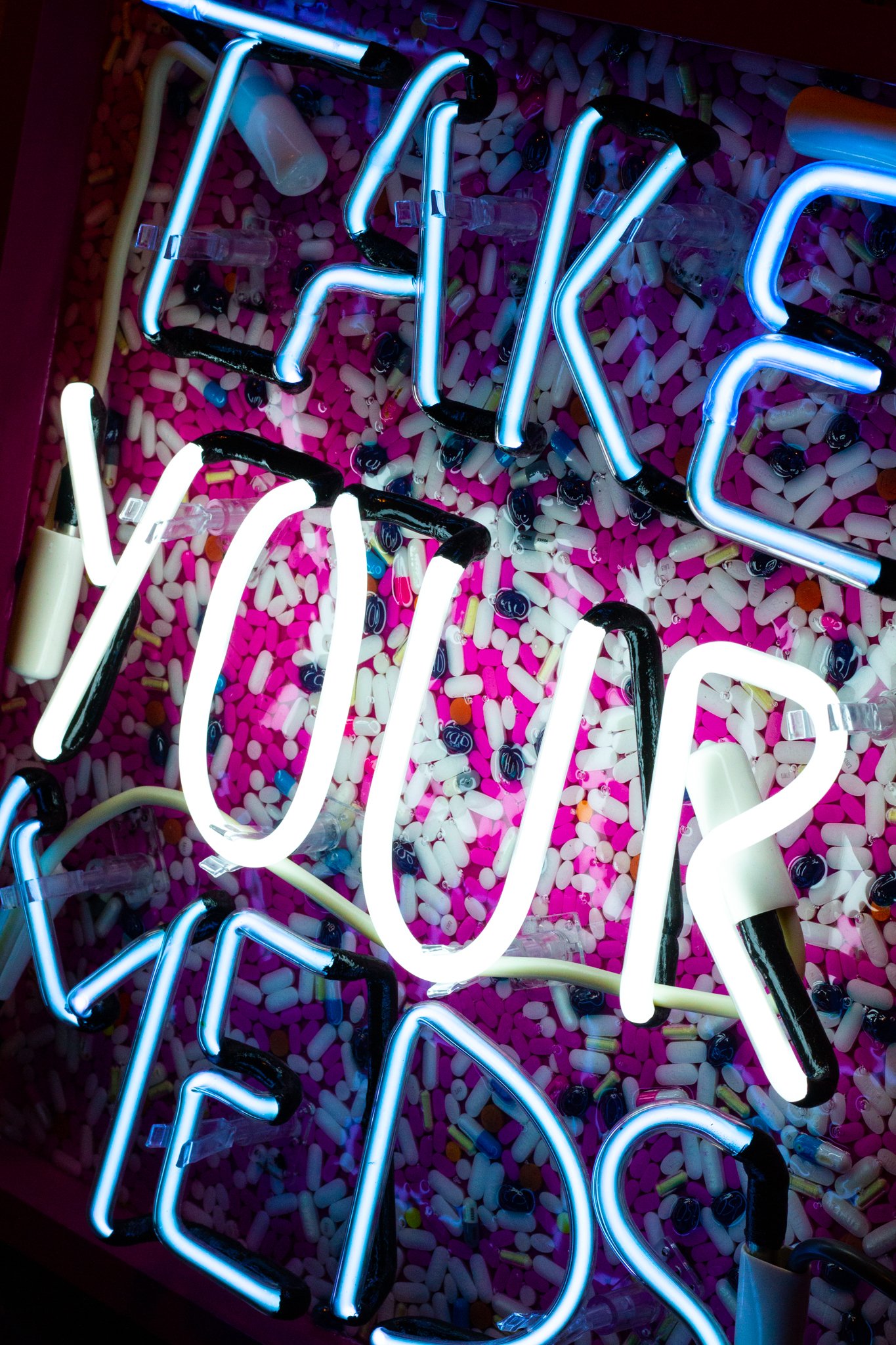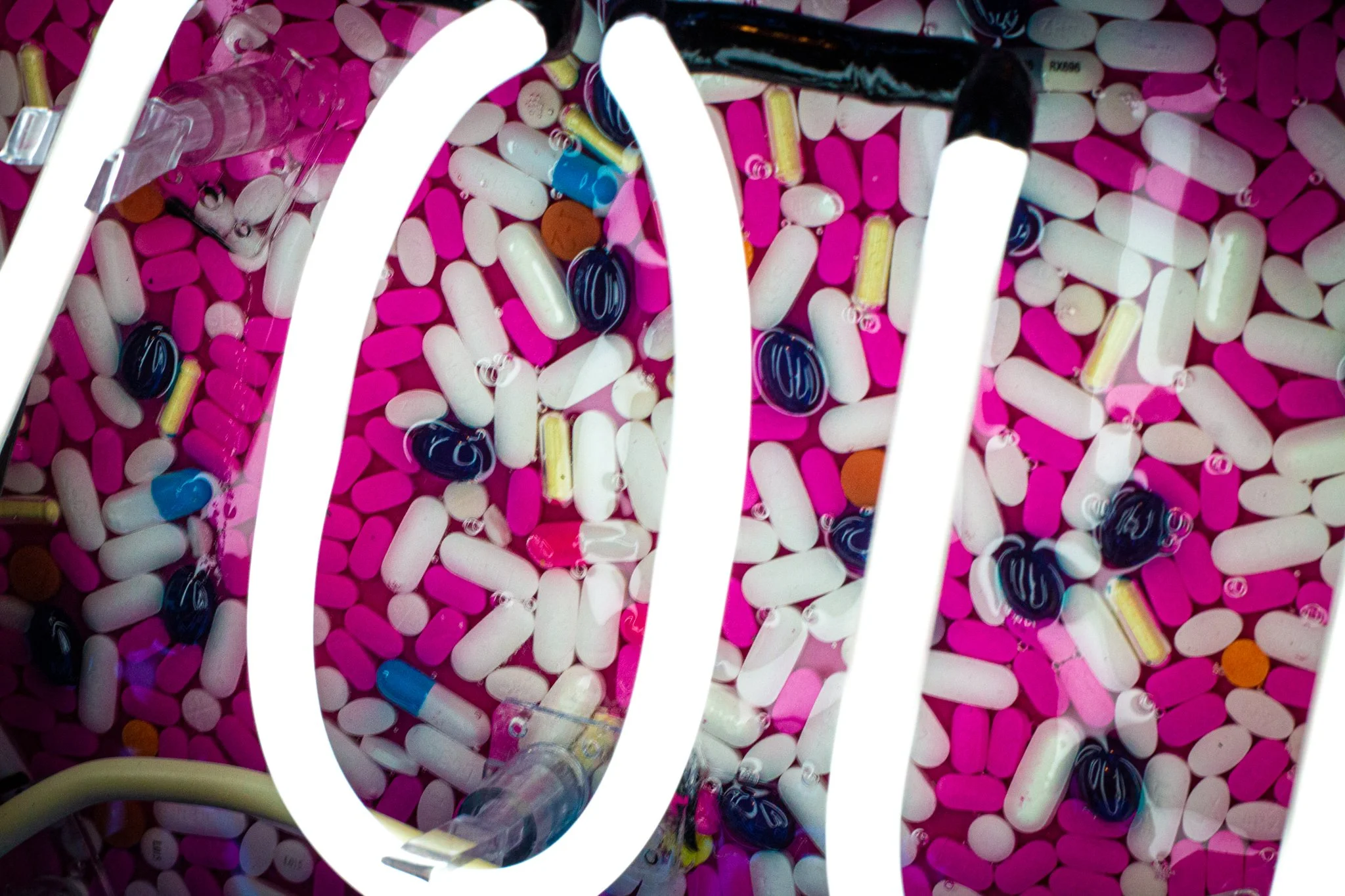
CECE Bittner
Cece Bittner is a neon sign artist graduated from the University of Wisconsin-Madison. Bittner uses her artwork as a beacon of hope to those who struggle with mental illness and hopes to end the negative stigmas associated with them.
“Take Your Meds”
by Cece Bittner
“My name is Cecelia Bittner, but most people know me as Cece. I’m 22 and live in downtown Madison with my two disabled cats, Louis (missing a foot) and Willie (has one eye). I am originally from Janesville, WI where I was born and raised until I left for college in 2018. I graduated this past December from UW - Madison with a Bachelor’s degree in Human Development and Family Studies and Psychology. I plan on going back to school for my master’s in psychedelic therapy, but I will be taking a couple of gap years so that I can experience life without the weight and constraints of school. I’m the bar manager at Comedy on State and I absolutely love my job there. When I’m not slinging drinks at the club, you can find me crocheting, hanging out with friends, listening to Mac Miller or Peach Pit, getting a tattoo, or sitting by the lake with my cats watching the ducks.”
-Cece Bittner, 2023
“During my last semester at UW, I took an art class titled Neon Light Sculpture taught by Tom Zickuhr. I took the class because I thought it would be fun during my last semester, but I wasn’t prepared to fall in love with neon as an art medium. I was going through a lot in my personal life so the glass lab became my escape from reality where I spent countless hours over the course of 14 weeks. My mini-series is centered around mental health and is my way of fighting the stigma against using medication to treat mental illnesses. “READY FOR PICK UP: D-AMPHETAMINE ER 20mg” is a reference to the monthly notification I get on my phone to pick up my Adderall prescription from the pharmacy. Since being diagnosed with ADHD I’ve learned that it is largely misunderstood by both the general and medical populations-- Adderall is more than a study drug and ADHD is more than being unfocused and fidgety. This piece is a way for me to express part of my identity, but I also want it to ignite educational conversations that break down the misconceptions surrounding ADHD.”
-Cece Bittner, 2023
“TAKE YOUR MEDS is the reminder I receive on my phone every day hence the title of the piece “Reminder - 12:00 PM, Daily”. The neon is mounted on a frame filled with assorted pills laid in resin. The assorted pills are my way of representing my journey with mental health. I want this piece to call attention to the stigma surrounding medication for mental illnesses. People tend to hide their mental health out of fear, so I created a bright, colorful piece that forces people to acknowledge it. There shouldn’t be shame in taking medication to be okay. Medication can bring out the beautiful parts of us that get locked away, and I believe that should be celebrated rather than silenced. I want this piece to be a reminder of the beautiful intricacies of mental health and a reminder to TAKE YOUR MEDS.”
-Cece Bittner, 2023



